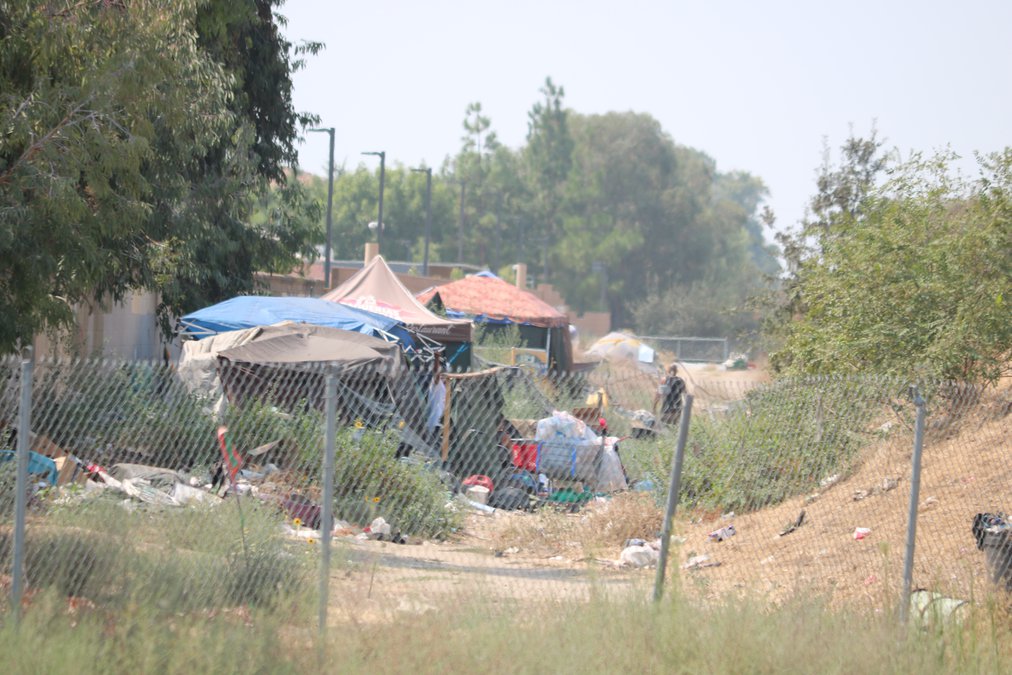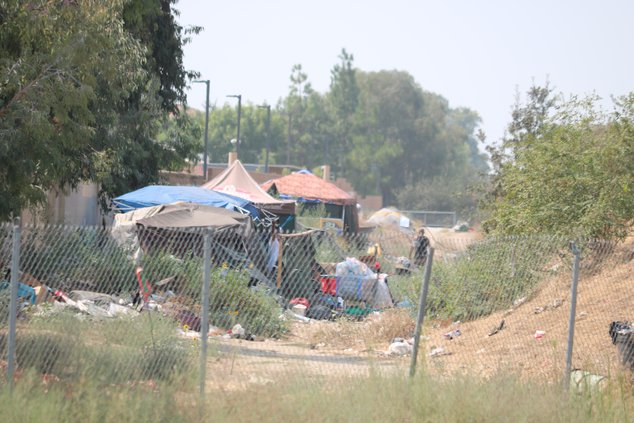It’s time to face reality.
Manteca will never be able to “arrest” the homeless for sleeping in public places even after they get a homeless navigation center/drop-in shelter in place at a cost when all is said and done will likely exceed several million dollars.
It is because of two things completely out of Manteca’s control.
First there is the 2018 9th District Court of Appeals ruling the U.S. Supreme Court let stand by refusing to hear the appeal filed by Boise, Idaho and enjoined by more than 40 jurisdictions including the City of Manteca.
The Clift’s Notes version of the ruling: The homeless cannot be cited or arrested for sleeping in public places when there is no available shelter space.
A lot of people are operating on the assumption that once Manteca gets a 250-bed shelter — or whatever number that’s more than adequate to accommodate the city’s homeless at any given time — and the homeless don’t follow lawful orders to head to the shelter that solves the problem. Far from it.
That’s because of the harsh reality of California’s justice system that is being rethought under the collective moniker of restorative justice.
And probably there’s nothing the concept of restorative justice makes more sense with than dealing with the homeless, specifically those that are the most problematic and chronic.
It’s not just because of the endless cycle citing and jailing creates. It is also the cost.
A few years back San Joaquin County District Attorney Toni Salazar Verber placed the cost of processing one homeless person arrested for sleeping illegally in public in excess of $2,200. That included the cost of arresting the individual, transporting to and booking them in jail, the public defender and prosecutor, police officers’ time in court, and the cost of the court. The cost for someone who is cited and not formally booked was only slightly lower.
It is about effective as using a sieve as a water container.
The homeless do not have the money to pay fines. After the court has handed down its verdict, the homeless’ situation will not have changed. They will still have no other choice but to sleep somewhere that is not legal to do so.
And as the wheels of the justice system turns ever so slowly the odds are high that the homeless will reoffend by being caught sleeping in public while there case is being resolved. That means if an officer cites them again it starts another legal process that consumes more money without solving the problem.
The San Joaquin County DA has no appetite to prosecute the homeless for crimes they commit to simply be able to live such as sleeping.
And it is the correct position to take as it resolves nothing while costing more and more money.
So once the navigation center/homeless shelter is in place simply citing those that refuse to go to the shelter won’t make much of a difference. The city, though, will have the legal luxury of telling the homeless where they can’t sleep and keep rousting them to move on.
Eventually they will either get the hint and head to the homeless shelter, go to a community that doesn’t have the prerequisite space at a homeless shelter in their town and do as the please there, or the police will tire or playing cat and mouse.
The real solution is the navigation center component of Manteca’s homeless initiative. And it can’t really work as effectively as possible unless you have a way to lure the homeless off the street which is where the shelter comes into play.
A navigation center does what Inner City Action as well as the Turlock Gospel Mission have been able to do in Manteca but on an amplified basis with year-round consistency. It works with the homeless to earn their trust. They build up self-worth by addressing problems. They get them to the point they can hold jobs. And eventually they are able to support themselves.
That is the only legal and workable solution.
And before everyone starts saying this is a Manteca-only issue, open your eyes.
Californians fed up with this state have been fleeing to Idaho for years.
It is a case where Boise was sued that makes what Manteca is doing the only legal way to go about getting homeless off the streets. That’s because the 9th District Court of Appeals ruling is the law of the land in California, Oregon, Washington, Idaho, Arizona, Hawaii, Alaska, and Montana.
And if you think the rest of the country will escape a similar bottom line, guess again. The high court has made it clear they saw no constitutional issue with the 9th District ruling regarding homeless and sleeping in public.
All it will take is for homeless advocates to craft the same legal path taken in the lawsuit against Boise for it to become the law of the land elsewhere.
You may not like it but there is no viable alternative for Manteca than to play within the perimeters of where they can legally ban illegal sleeping by carving out reasonable exceptions that the courts have allowed such as not blocking sidewalks, not sleeping in public places where all of the public is barred from at certain hours, and similar edicts that are universal and take into account health and safety concerns involving public areas.
Of course the city could just back off entirely and give the homeless essentially complete run of the city.
To see where that gets you take a drive through downtowns in places like San Francisco and Los Angeles.
The best thing the city can do now is to make getting the homeless navigation center/homeless shelter in place a high enough priority so the doors can be open by sometime in 2022. That will also require gathering together all available community resources so the navigation center will be as effective as possible.
This is not an effort that should be left to chance.
It is a critical undertaking that will not end when the center is in place. The need to address homeless and affordable housing issues in an organized and effective manner is likely to be an ongoing municipal need for decades.
There needs to be someone coordinating the city’s effort and making sure it is executed.
Doing it by committee or however the council thinks it can get done without adding targeted staff is likely to burn through — and cost more — money for both the city and other public agencies as well as the private sector that deals with homeless related issues and costs than whatever it will cost the city to fill such a position.
This column is the opinion of editor, Dennis Wyatt, and does not necessarily represent the opinions of The Bulletin or 209 Multimedia. He can be reached at dwyatt@mantecabulletin.com





